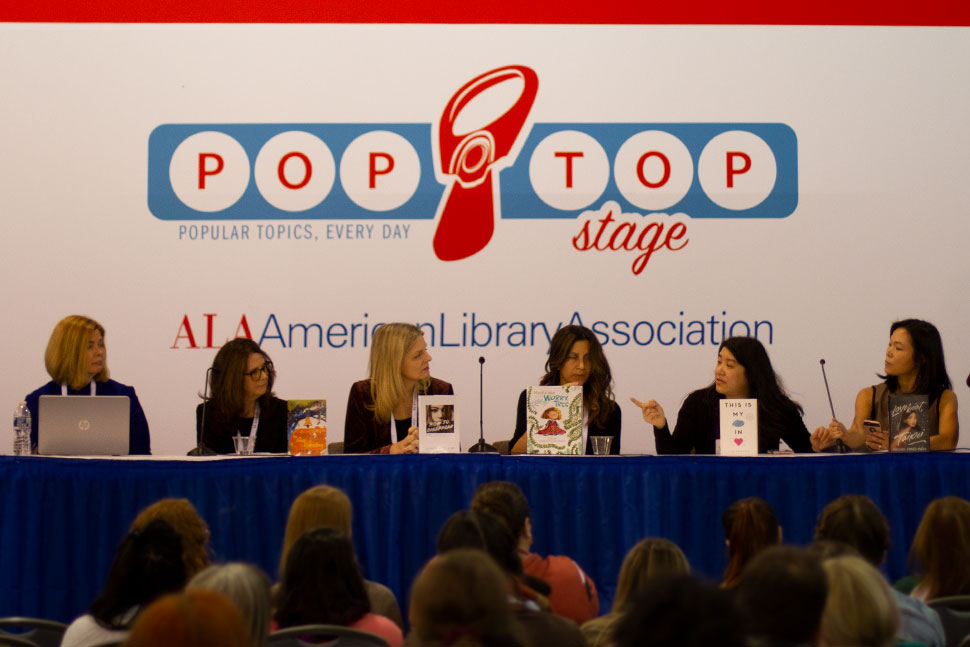
Five young adult authors gathered on the Pop Top Stage in the Exhibit Hall Sunday, January 26, at the American Library Association’s 2020 Midwinter Meeting to discuss a topic relevant to both their personal and professional lives: mental health, especially that of young readers.
Abigail Hing Wen (Loveboat, Tapei), I.W. Gregorio (This Is My Brain in Love, 2020), Gail Silver (Mindful Bea and the Worry Tree, 2019), Sharon Huss Roat (How to Disappear, 2017), and Beth Kephart (The Great Upending, 2020) were joined by Lauren Caldwell, director of the American Psychological Association’s (APA) Children, Youth, and Families Office, for “Books in Our Age of Anxiety: Using Literature to Help Kids Navigate Their Lives,” a panel discussion about the depictions of anxiety, depression, and other mental health issues in their books. For some writers, it’s a subject that hits close to home.
“My book was inspired by my own struggles,” said Gregorio of her YA romance. The author, who’s also a physician, revealed that she currently takes antidepressants and wants to lift the stigma attached to that.
“It’s not a sign of weakness to be on medication,” she said.
Kephart’s The Great Upending follows a girl with Marfan Syndrome whose family struggles to afford medical care while keeping their farm afloat. Kephart said the story was inspired by her own friendship with a girl who has the disease. She had to slip into the girl’s world—and her mental state—to tell the story.
Hing Wen, who moderated the panel, said that she pulled from her own experiences growing up to create a particular character in her book, detailing how the elevated expectations placed on Asian-American youth by family and peers can lead to high levels of stress and anxiety.
Caldwell provided vital statistics: Three out of four people in the US with mental-health issues show signs before age 24; 4.4 million youth in the US suffer from anxiety; 1.9 million from depression. And the numbers are increasing each year, according to a 2017 APA study.
Caldwell said librarians can help. She recommended posting helplines from the National Alliance on Mental Illness or the Center for Disease Control and Prevention in public spaces and stocking free resources they provide; sponsoring programs on mental health with medical professionals and counselors; curating books on mental health topics; and, most important, being genuine, thoughtful, and sincere in their interactions with kids, many of whom but may be too afraid or ashamed to reach out for help.
Silver, who’s also the founder and director of Yoga Child, Inc. and founder and CEO of the School Mindfulness Project, reiterated the need to broach these topics with kids on their own terms.
“If there’s always someone watching over them, the kids will not seek help,” she said. “Let them find resources on their own, but have them ready and available.”
Huss Roat, whose book How to Disappear follows a girl with social anxiety who creates a fake life on social media as a replacement for her own, agreed: “If you see kids reading these books on mental health issues, be sure they know where to turn.”
